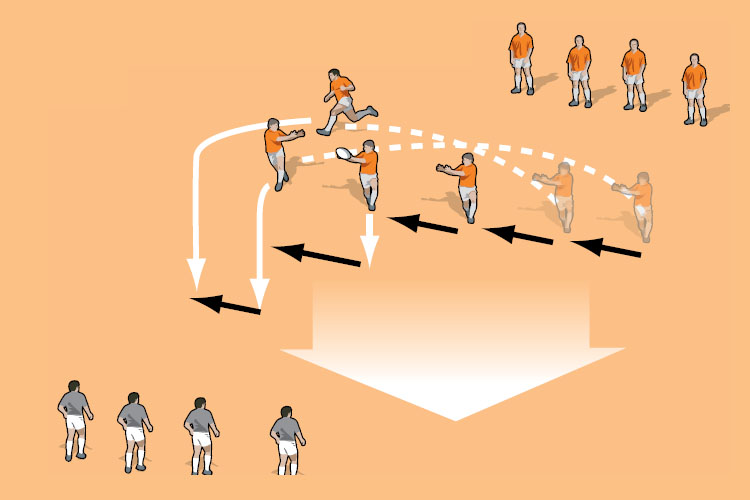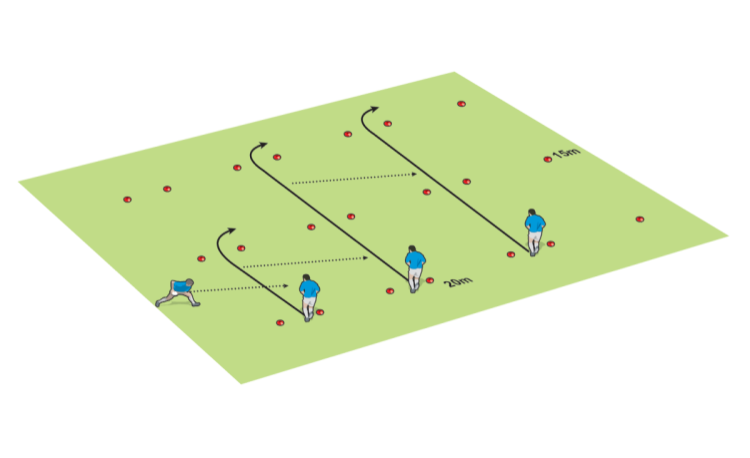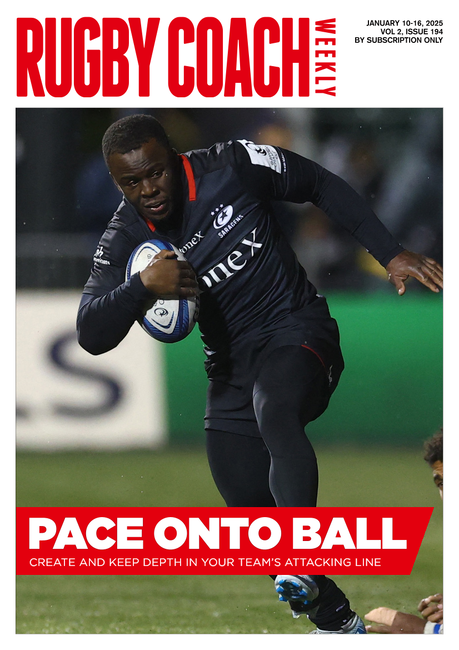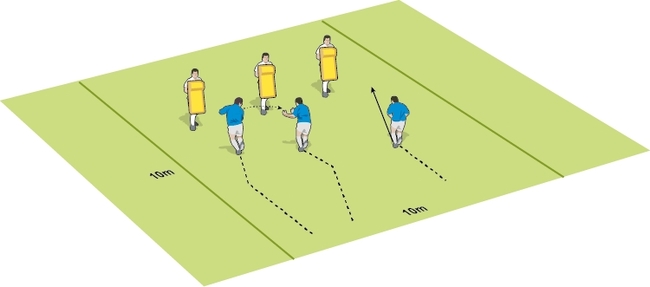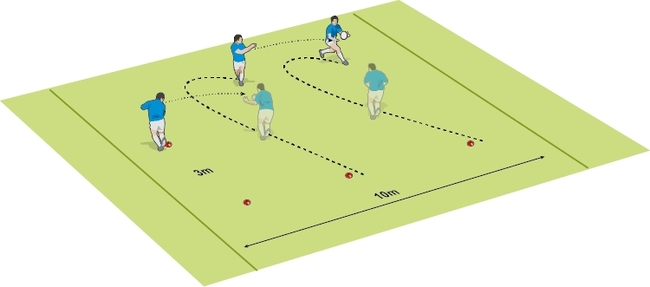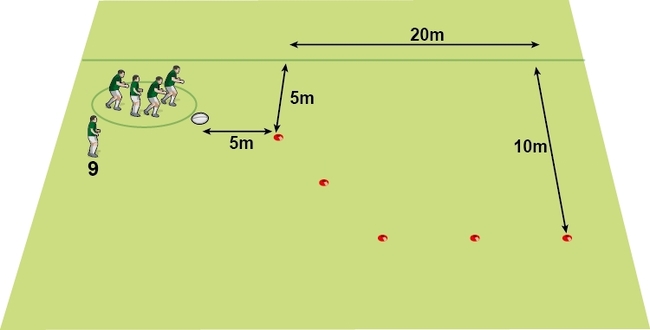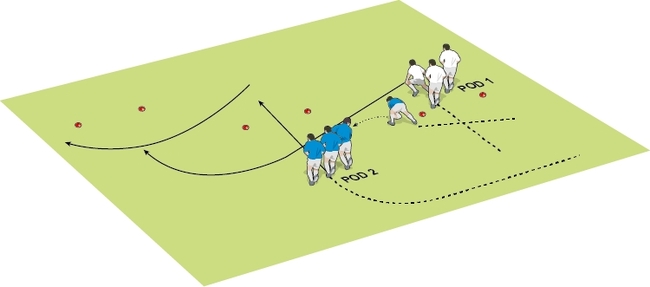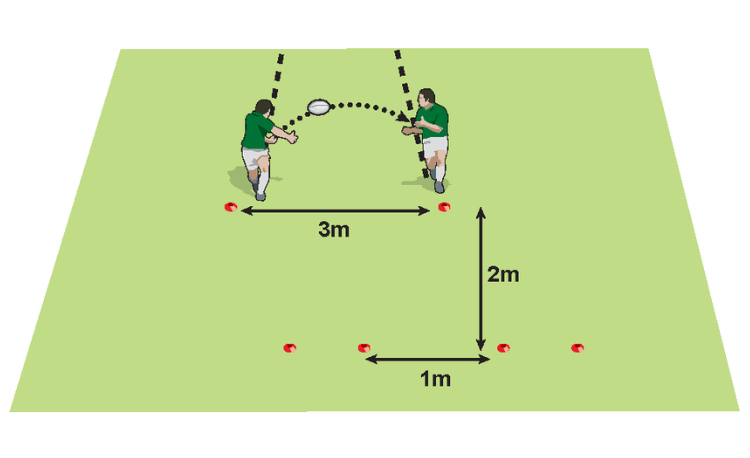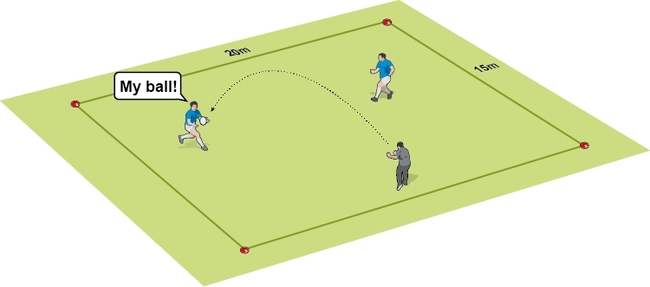Magic hands and core to the try line
Three themes for ball carriers to engage defenders, pass well and be able to support after making a pass.
You can keep your ball carrier dangerous by following these three principles.
Use them as reference points so players can review their own performance.
1. BODY SHAPE BEFORE THE PASS, RUN OR KICK
Players should have their ’core to the try line’ as they run with the ball. This engages the defenders because the ball carrier is running forwards. It also means the ball carrier can pass, run or kick at any given time.
2. PARALLEL HANDS
Players should aim to keep their hands above their tummy button. The key is to finish off the pass with high hands.
When I was at the Ospreys, we called it ’throw the magic’. The fingers are pointing at the target as if a spell had been thrown to the receiver. I have found players respond well to this type of imagery.
3. BALANCE
Work hard on the players being balanced with the ball in hand.
They are on their toes before receiving the ball and, when they pass, they use the correct weight transference between the inside leg to the outside leg. This is linked to the support principles.
ENGAGING THE DEFENDER

The ball carrier takes on the ball, with their core facing up the pitch. As they pass the ball, the core faces towards the corner flag as they release the ball. Crucially, they should not turn their body and move across the pitch until after they have passed the ball.
As soon as the ball carrier moves across the pitch, the defence sees them as a reduced threat. They cannot perform the run or kick functions so well either. We want the defender to think they will have to make the tackle at all times.
GET A SECOND TOUCH ON THE BALL
Handling the ball does not finish once the pass is made - players need to work after the pass.
There is a clear sequence for the ball carrier: catch, pass, follow. We tell the player to “get your second touch”.
In the words of the great Australian fly-half Mark Ella: “If I touch the ball once, there’s a chance someone will score. If I touch it twice, the chances are the person I pass it to will score. If I touch it a third time, I will score."
Therefore, in practices, players have to work once they have passed the ball. However, they cannot make that transition to follow the ball until they have made the pass itself. The ball carrier must engage the defender first.
Related Files
Newsletter Sign Up
Coaches Testimonials

Gerald Kearney, Downtown Las Vegas Soccer Club

Paul Butler, Florida, USA

Rick Shields, Springboro, USA

Tony Green, Pierrefonds Titans, Quebec, Canada
Subscribe Today
Be a more effective, more successful rugby coach
In a recent survey 89% of subscribers said Rugby Coach Weekly makes them more confident, 91% said Rugby Coach Weekly makes them a more effective coach and 93% said Rugby Coach Weekly makes them more inspired.
Get Weekly Inspiration
All the latest techniques and approaches
Rugby Coach Weekly offers proven and easy to use rugby drills, coaching sessions, practice plans, small-sided games, warm-ups, training tips and advice.
We've been at the cutting edge of rugby coaching since we launched in 2005, creating resources for the grassroots youth coach, following best practice from around the world and insights from the professional game.

